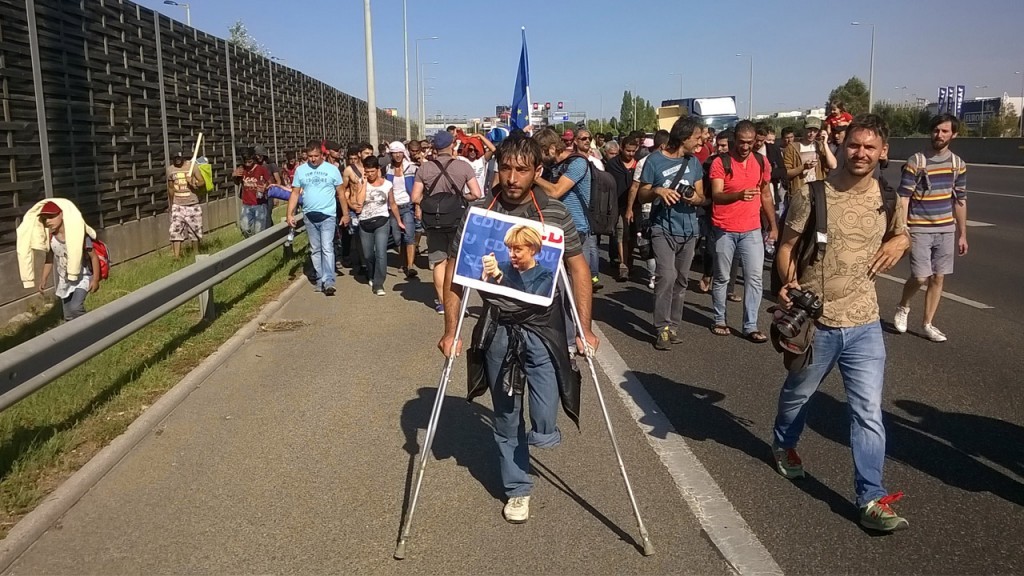The https://english.atlatszo.hu use cookies to track and profile customers such as action tags and pixel tracking on our website to assist our marketing. On our website we use technical, analytical, marketing and preference cookies. These are necessary for our site to work properly and to give us inforamation about how our site is used. See Cookies Policy
Atlatszo.hu walks with refugees
In 2015, Atlatszo.hu devoted extensive coverage to Hungary’s involvement in the migration crisis that is defining European politics to this day. One of the most crucial occasions was the day when a large group of refugees decided that they wouldn’t wait any longer for help and set off towards the west on foot. Atlatszo.hu walked with them and documented the journey.
In August of 2015, the migrant crisis took a major turn in Hungary as thousands of refugees were waiting in Budapest’s Keleti train station for passage towards western Europe, mainly with Germany as their desired destination. Reports had quickly spread the Germany was open to all Syrian refugees, while Austria had essentially shut off its borders.

Chaos ensued, thousands protested, demanding free passage, while others were tricked into getting on trains that didn’t go west, but instead went to Hungarian refugee processing camps.
Tensions rose, but the protests led nowhere. On September 4, thousands of men, women and children took off on foot, determined to reach Austria, and make their way from there to Germany.
Authorities initially tried to block the crowd’s progress, but having failed to do that, the police resigned themselves to the fact that the best they could do was to try to keep people safe. Civilians later lined up along the road handing out supplies to the marchers, many were locals, but many had also came from other countries to offer their help.
By the time it got dark and having walked 20 kilometers, the marchers reached a resting place just outside Budapest. Here, they received food, water and shelter from the authorities, as well as from several charities. After this stage, the orderly columns dissolved, and families became separated on the dark roads. Police eventually had to close off sections, seeing that thousands of people wandering around in the dark on the highways was dangerous.
At this point, shortly after midnight, buses sent by the government started arriving, which then carried the people towards the border with Austria. From there on, the refugees could take trains which took them onwards towards Germany.

